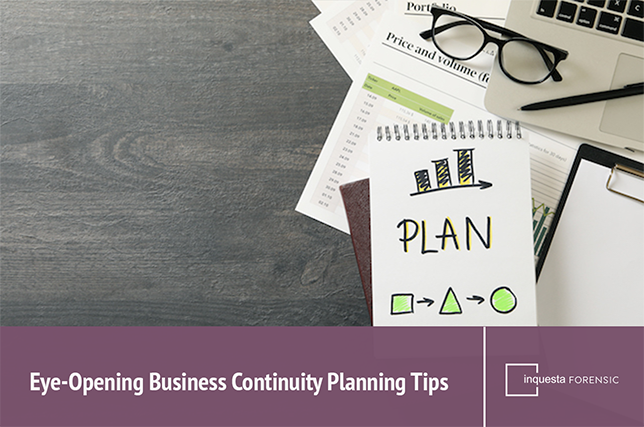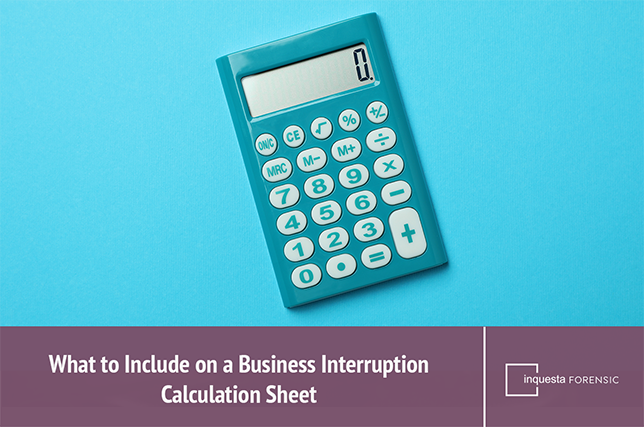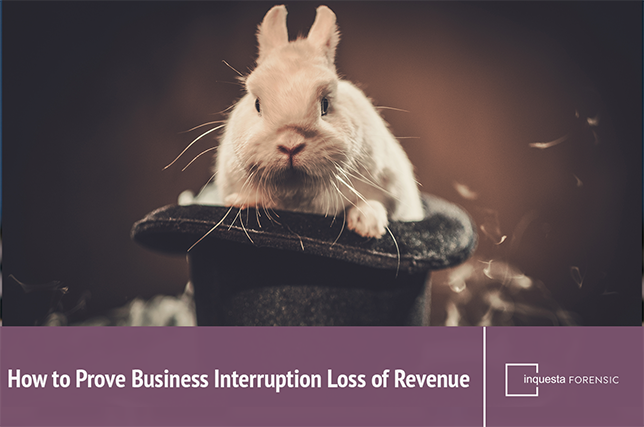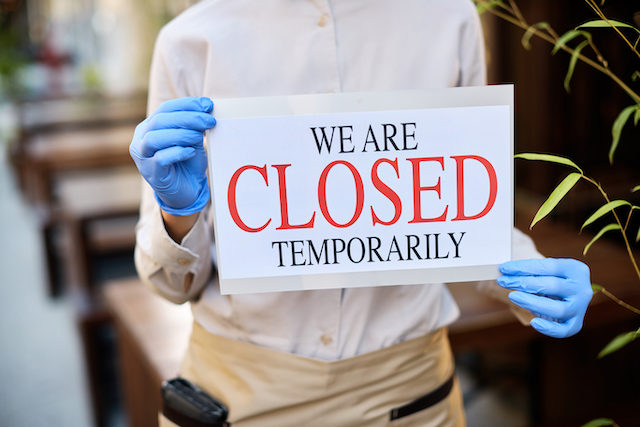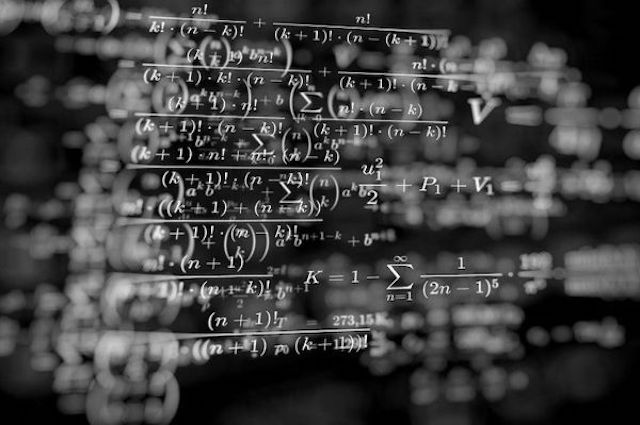A company director cannot always be prepared for everything. On occasion, things will happen that can cause great disruption to a business, as well as a huge dent in company finances and profits.
While you can’t predict it, you can always prepare for it. A forensic accountant has all the expertise and experience required to assist a business owner with calculating lost profits and help them get back on their feet.
Of course, it is important not just to understand the basics of calculating lost profits, but also prove that you have a case in the first place. Remember that the burden of proof always rests with the claimant, so it is essential to seek specialist guidance to assess the validity of your claim. Thankfully, a forensic accountant can help with this too.
How to Prove Lost Profits
In order for a business owner to prove lost profits they must be able to establish three important details; the proximate cause behind the claim, whether it was possible to foresee the likelihood of lost profits, and the damages must be provable with reasonable certainty.
Lost profits are damages caused by some form of disruption to a business’s operation. These disruptions can vary from damage to property to breaches of contract.
Every case of lost profits is unique. However, it is important that you know what to look for if you wish to make a claim of your own.
Proximate Cause
Establishing proximate cause requires that the lost profits can be tied directly to the disruption to operations. Lost profits can only be recovered if they can be clearly shown to be a direct result of another party’s wrongdoing.
Proving proximate cause can be difficult. Once a claimant is able to prove that another party has affected their profits, the burden typically passes over to the defendant, who will then have a rebuttal opportunity to attempt to prove that there were other factors that contributed to the damages, either entirely, or partially.

Foreseeability
Foreseeability seeks to establish not whether the lost profits were caused by an outside factor. It does not even seek to ascertain whether the loss itself was predictable, instead it establishes whether the particular loss and its effect on profits could be expected when signing the initial contracts.
If the effect on company profits could not be deemed as foreseeable when signing the contract on the services/employment/establishment etc. then it can be difficult to prove that the defendant is guilty of directly causing lost profits due to negligent action.
To establish whether lost profits were foreseeable, courts will look at the exact terms of any relevant contracts, as well as the industry standards, and any other circumstances besides.
Reasonable Certainty
The rule of reasonable certainty dictates that lost profits can never be calculated to the penny, and therefore can never be totally accurate. For this reason, lost profit calculations do not need to be perfect as long as sufficient evidence exists to base and support a rational deduction with reasonable certainty.
During this stage, it is fairly common for courts to expect a clear distinction between proof of profits without the disruption, and the amount of damages sustained. Generally the onus of expectation is more on providing evidence that proves expected profits would have taken place, rather than calculations regarding the value of profits lost.
How Forensic Accountants Determine Lost Profits
Calculating lost profits is, in essence, a ‘but for’ estimate of how the business may have performed had there been no disruption. Each case is unique, and calculation methods will differ. However, there are various factors to keep in mind to determine lost profits, and give an expert an idea of how much the firm has potentially missed out on.
Lost profits usually result from disruptions in standard operations, or from disputes over things like contracts or intellectual property. Therefore, the act of quantifying losses is key if you want to begin the process of calculating lost profits and seeking compensation. A forensic accountant can utilise multiple tactics in order to accurately determine losses. This includes:
Establishing the Correct Time Period
The first step to calculating lost profits is to determine the time period during which they took place. In most cases, this will start on the date of the interruption, and finish when business has been able to return to normality.
A company returning to business as usual constitutes when it can be seen as returning to levels consistent with performances pre-disruption. Examples include the period necessary to repair or replace damaged assets, or the period of a patent infringement from another party.
Understanding Business Impact
To best comprehend the ‘business impact’, or the negative effects of a loss on a business’s operations, a forensic accountant may opt to interview owners or employees of the affected firm, or conduct their own independent research.
They will look to consider important factors such as seasonal and customer trends, the regional and national economic climate, and competition. The ultimate goal of this phase is to ascertain exactly how the business was performing prior to the disruption, and how it would have expected to perform ‘but for’ the interruption to operations.
Calculating Net Value Lost
After identifying the affected time period, it’s vital that you accurately calculate the gross sale value of any lost goods or services. Gross sale value is the price a customer would have paid had the business been able to operate as normal.
Identifying Saved Expenses
Something to remember during the process, is the importance of determining costs that the affected party would have incurred had they been able to open their doors as normal. For example, a restaurant forced to close would not have needed to purchase fresh food during the affected period, representing a saving.
It’s vital to deduct these costs, typically referred to as the cost of goods sold, from the total net sale value. Examples of other expenses that could be factored in at this stage include:
- Packaging Costs
- Delivery or Transport Expenses
- Payroll
- Sales commissions
- Management fees
- Utilities
Depending on the specifics of the case, some such expenses may be considered as ‘saved’ which could further reduce the amount lost.
Considering Actual Results
This is specific to businesses that, while operations were affected, were able to partially operate during the impacted period. If this is the case, the actual gross profits earned should be analysed and factored in when calculating lost profits amounts.
A thorough and accurate review of the profit and loss statements is necessary to identify any and all additional costs during the process.

Are Lost Profits Consequential Damages?
Yes, lost profits are generally seen to be consequential damages. This means that they do not usually directly result from an immediate act, but rather from the resulting consequences. In the context of a business, lost profits are essentially a knock-on effect of disruptions.
The following factors determines whether lost profits are consequential damages or not:
- Indirect: Lost profits are not generally the direct outcome of an incident but will stem from the inability to conduct normal business as a result of the inciting incident.
- Foresight: In order for lost profits to be recoverable, they must be foreseeable. This means that the party responsible for the disruption, who would be expected to compensate the company affected, must be able to reasonably predict that their actions could result in lost profits.
- Causation: There must be a clear causal link between the disruption and the profits lost. The affected party has to be able to demonstrate that the losses are a direct consequence of the disruption and not caused by other factors.
- Quantifiable: The lost profits have to be quantifiable to be deemed as valid. To this end, calculating lost profits amounts will require detailed financial analysis and projection to ensure the claimed amount would have been earned without issues.
Legally, courts usually must answer the question of whether lost profits are consequential damages or direct damages, which are damages that are the immediate result of an action. In order for a party to successfully pursue lost profits as general damages, they must be able to provide proof of estimated earnings. General damages in this context will often refer to issues of contracts.
How Forensic Accountants Prepare a Lost Profits Damages Calculation
The vital skill a forensic accountant possesses when calculating lost profits is thoroughness. Appointing a forensic accountant to assist you guarantees that no stone will be left unturned, no data will fall through the gaps, no fact will go unconsidered; nothing will be missed at all in pursuit of the right result.
A forensic accountant will develop an appropriate plan of action for any lost profits claim — without one you could find your claim rebuffed as a result of something not considered.
As part of the plan, a thorough internal review will take place, a forensic accountant will interview all relevant personnel, review all internal policy and paperwork, as well as conduct a thorough examination of all conclusions before the claim is submitted so as to spot any possible errors or figures that could be unpicked.
A qualified forensic accountant also possesses the skills necessary to act as an expert in court should it be needed. A key part of the training and expertise of such a specialised accountant is their ability to present their findings in court; both accurately and in a relatable way.
A forensic accountant will be able to get their point across, including all relevant data and findings, while being able to present it in terms that everybody will be able to understand.

3 Main Methods of Calculating Lost Profits
When calculating lost profit damages, experts will look to three common methods, the before and after, benchmark, and statistical forecasting methods. How a forensic accountant determines lost profits will likely depend on the type and extent of damages.
The three main methods of calculating lost profits are as follows:
Before and After Method
The before and after method requires the forensic accountant to demonstrate the firm’s profits prior to the inciting incident compared with the earnings following the event. This is used to simply and clearly show the losses incurred.
In order for this method of calculating lost profits to work, the business in question must have a clear history of profits prior to the issue taking place. As a result, it is usually inappropriate for a case involving a new startup business. As part of the before and after method, outside factors that are not related to the damages that could have still harmed profits must be taken into account.
Example of the before and after method: An established manufacturer of computers experiences a breach of contract with a supplier. This supplier is responsible for providing a critical part of the engine that’s required for the technology to function. As this part order can no longer be fulfilled for a large period, the manufacturer must halt production — holding up the release date and significantly affecting profits. A forensic accountant would create a two-line chart with the manufacturer’s historical data to assume profits next to the actual profits. The lost profit amount would, under this theory, be the difference between the two lines.
Benchmark Methodology
The benchmark method requires experts to compare the experience of the affected firm with a ‘benchmark’ business in the industry. This company is one that the forensic accountant can reasonably compare to the damaged firm — there would be little use comparing a regional fast food restaurant with McDonald’s.
This method relies on the idea that the affected company could have achieved similar levels of profits of the unaffected but for the damaging event and barring any unforeseen external factors. Examples of different ‘benchmarks’ a forensic accountant may look to when calculating lost profits include:
- Revenue of a similar business within the same industry
- A separate and undamaged branch of the same business unaffected
- Projections for the impacted company compared to industry averages
Example of the benchmark method: A restaurant franchise hires an electrician to conduct work — a fault in the work results in a fire to the premises which means the restaurant will be unable to open for a significant period. While insurance will cover the equipment lost, it will not take into account expected profits. The forensic accountant in this case could compare the alleged profits lost with those of another location under the same umbrella. Key things that could determine the success of this method include the similarity of the two businesses, as well as expert testimony regarding the electrical work done.
Statistical Forecasting
The statistical forecasting method is seen as the most complex and data driven of the primary methods of calculating lost profits. Statistical forecasting requires inputting data and assumptions made using the other methods into a modelling tool. This tool will yield predictive calculations regarding lost profits. Statistical forecasting is ideal for more complex cases, with multiple external factors to consider. However, it can be challenging to explain in easy to understand language when necessary. Fortunately, an experienced forensic accountant will have the expertise necessary to understand the best way of presenting this data as clearly, simply, and intuitively as possible so anybody will be able to understand.
Example of the statistical forecasting method: A supplier is taken to court for breach of contract. Despite the verdict landing on the side of the supplier, there has been significant reputational damage. This results in the supplier losing recurring clients and being passed over in favour of competitors on jobs they likely would have landed previously. A forensic accountant will conduct before and after and yardstick methods, using historical and current data, and then input this into their modelling tool. This tool will be responsible for accurately calculating lost profits suffered by the supplier due to damage to their reputation. The forensic accountant will then be able to present this evidence as an expert witness in court, should it be necessary.
How Inquesta Can Help with Loss of Business Profits
If your business has suffered significant financial loss as a direct result of an inciting disruption out of your control, be it by a third party or a factor out of your hands, we can help. The Inquesta team has amassed decades of experience supporting and assisting business through loss of profits and can provide an honest, accurate service. Working with you and your insurers we can devise a detailed claim, assist with negotiations, act as an expert witness, and more. Contact our team, or request a free consultation today to learn more about what we can do to assist you.
- How to Value a Startup Business: A Guide for UK Entrepreneurs
- Pig Butchering Scams: Guide to Crypto Romance Fraud
- Shareholders’ Disputes: How Business Valuation Helps with Shareholder Dispute Resolution
- 11 Costly Business Valuation Errors (And How to Avoid Them)
- Fraud in Divorce: How UK Experts Expose Hidden Assets

